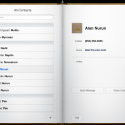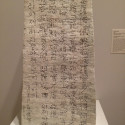It’s probably happened to you before: There was some article, poem or story that you really loved, and you told your friend to read it. They did, and maybe they said, “Yeah, it was good,” but they just didn’t seem affected by it like you were. How do we account for two people having vastly different experiences with the same piece of text?
Louise Rosenblatt was a researcher who wanted to understand how humans experienced literature. She proposed a model (based on the work of philosopher John Dewey in his famed Art As Experience) wherein both the reader and the text are active participants in the encounter we call reading. In her words:
Instead of two fixed entities acting on one another, the reader and the text are two aspects of a total dynamic situation. The “meaning” does not reside ready-made “in” the text or “in” the reader but happens or comes into being during the transaction between reader and text… “Meaning” is what happens during the transaction.
The act of reading, then, is the fusion of a person, along with their lifetime experiences, thought associations, current state of mind and interests, with the text.
According to Rosenblatt, these transactions result in experiences along the efferent–aesthetic continuum. Efferent experiences are characterized by intellectual analysis, focusing on information to be extracted from the encounter for later conscious, public use. Aesthetic experiences, on the other hand, are private. They are artistic and of-the-moment, incorporating the background, emotional state and thoughts of the beholder. Aesthetic experiences are moments of epiphany—almost spiritual. They are when a piece of writing, as we often say, strikes a chord with us.

Rosenblatt highlighted that, as we read, we are constantly navigating this continuum. Some parts of a text might strike us more aesthetically, and others more efferently. Even reading the driest of academic treatises might spark moments of aesthetic, just as reading the most beautiful poem might trigger efference.
Now, Rosenblatt focused on the experience with literary texts, but there is so much more to consider. In a recent article in the Journal of Documentation, Kiersten Latham extended this model to describe experiences with museum objects, demonstrating its versatility in describing information behavior. But even in the world of text, there is so much more than just the text itself: There is the typography, the kind of paper (or screen!), the print quality… All these factors contribute to the reading experience, even though we don’t often think about it. (Granted, the growing pervasiveness of e-readers in recent years has actually caused many more of us to consider this than otherwise would have.) Latham notes, for example, that “many people talk about the handling of the paper as part of their reading experience.”
What is the point of theorizing here? I think questions of person–document experience are important in today’s archive environment. As we rush to digitize everything, are there aspects of the physical experience that we are depriving future generations of? What can we learn from the study of information experience to hedge these losses? Where should we direct our efforts as we develop new technologies (e.g., high-density displays, haptic response)?
 Follow
Follow

